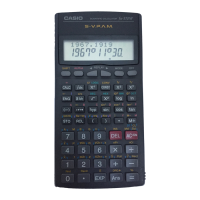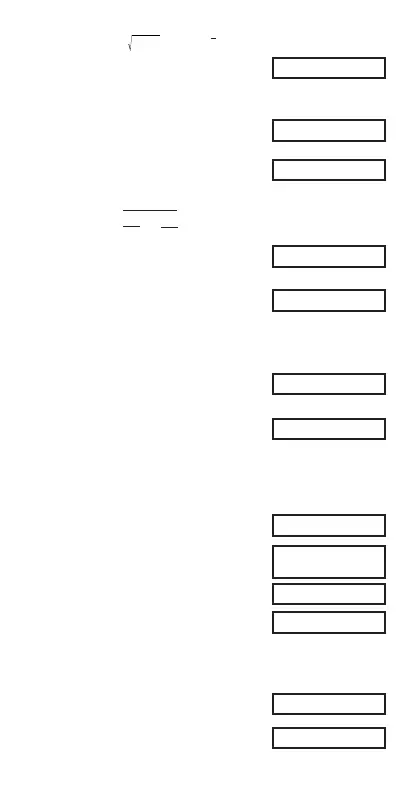

Do you have a question about the Casio FX-100W and is the answer not in the manual?
| Brand | Casio |
|---|---|
| Model | FX-100W |
| Category | Calculator |
| Language | English |
Instructions for safely removing and replacing the calculator's protective cover.
Guidelines for handling, storing, and using batteries safely to prevent damage or injury.
Important precautions to take before and during calculator use for optimal performance and safety.
Explanation of the calculator's two-line display capability for viewing formulas and answers simultaneously.
Visual representation and explanation of the calculator's key layout for various models.
Details on various calculation modes (COMP, CMPLX, SD, REG, BASE-N) and display modes (FIX, SCI, ENG).
Steps for correcting input errors using cursor keys, DEL, and INSERT functions.
How to use the Error Locator to identify and correct calculation errors.
Guidance on using the COMP mode for performing basic arithmetic operations.
How to perform calculations involving fractions and their decimal conversions.
Examples and methods for performing various percentage calculations.
Examples of calculating trigonometric and inverse trigonometric functions with different angle units.
Examples of calculating common (log) and natural (ln) logarithms and antilogarithms.
How to perform calculations using the Engineering notation (ENG) mode.
How to convert between polar and rectangular coordinate systems.
Instructions for entering SD mode and performing standard deviation calculations.
How to perform various probability distribution calculations (P(t), Q(t), R(t)).
How to enter REG mode and select different regression types (linear, logarithmic, etc.).
Explanation and examples of linear regression analysis (y = A + Bx).
How to enter CMPLX mode for calculations involving complex numbers.
How to find the absolute value (Abs) and argument (arg) of complex numbers.
How to store, recall, and use formulas for calculations with variables.
How to access and use built-in scientific constants.
Explanation of performing calculations in binary, octal, and hexadecimal number systems.
How to perform definite integral calculations using the ∫dx function.
Steps to troubleshoot unexpected calculation results or errors.
Explanations of common error messages like Ma ERROR, Stk ERROR, Syn ERROR, Arg ERROR.
The precedence rules for performing calculations, including parentheses and function order.
Step-by-step guide on how to replace the battery in the calculator.